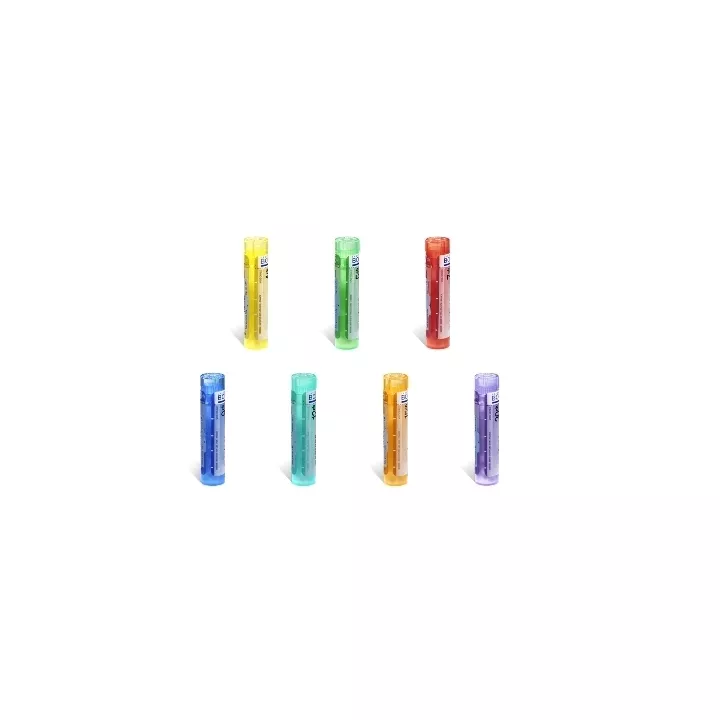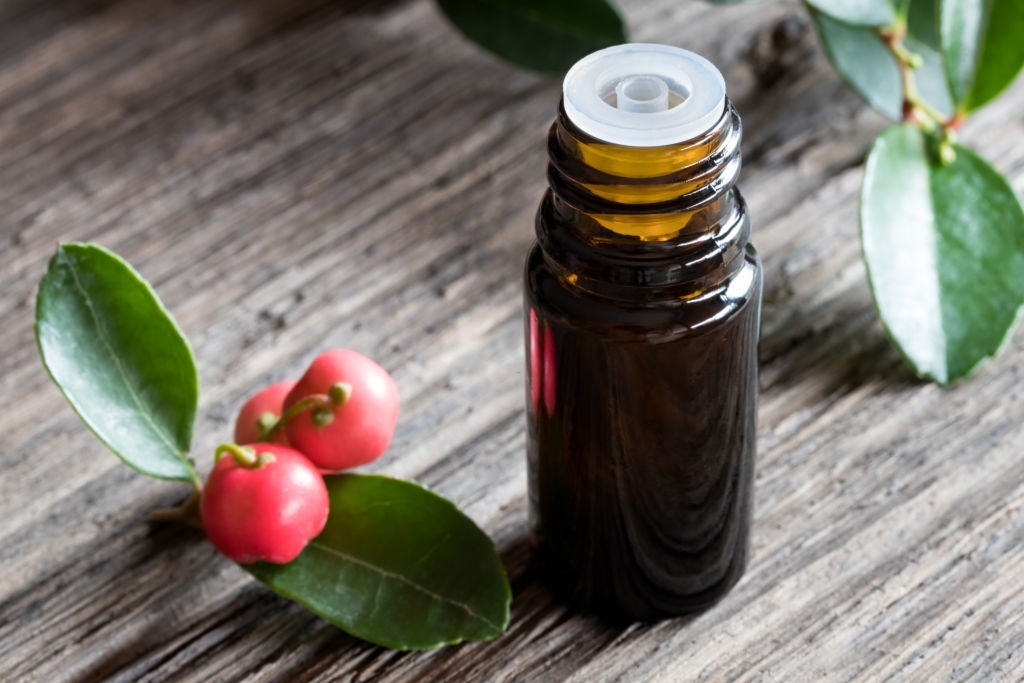Dioscorea Villosa Boiron : Homeopathic Treatment for Muscle Pain and Spasms
Registered medicine : EH00550
Origin : Vegetal
Dioscorea villosa is a homeopathic medicine obtained from the rhizome of the wild yam, a herbaceous perennial plant generally found in central North America and Mexico. It is indicated for the relief of back pain, particularly in the lumbar region, painful menstruation, pre-menopause and abdominal pain such as hepatic and nephritic colic. The dose required varies according to the pathology observed.
Discover Dioscorea Villosa by Boiron, a homeopathic remedy for the relief of muscular pain, abdominal pain, painful periods and uterine contractions. Choose a natural approach for your comfort.
Dioscorea Villosa highlights the holistic approach of homeopathy, which values the benefits of plants to offer natural, personalized therapeutic solutions. By harnessing the antispasmodic and analgesic properties of Wild Yam, this homeopathic remedy offers a gentle alternative for the treatment of pain and spasm. As with any homeopathic intervention, consultation with a qualified health professional is essential for safe and appropriate use.
Indications and dosage
Homeopathic medicines in granule tubes or globular doses can be used for a variety of symptoms, so it is not possible to determine the indications and dosage of a specific preparation.
The homeopathic physician selects the appropriate medicine, dilution and dosage according to the patient's state of health and characteristic symptoms.
Dioscorea Villosa: Homeopathic relief for pain and spasms
An effective remedy for muscular and abdominal pain
Dioscorea Villosa, offered by Boiron, is a homeopathic remedy prized for its effectiveness in relieving muscular pain, particularly low-back pain, and spasmodic pain of the abdomen. It is particularly indicated for pain that is soothed by stretching, offering significant relief to those suffering from painful contractions of the back and abdomen.
Support in gynaecology and childbirth
In gynecology, Dioscorea Villosa is a valuable ally for women suffering from painful menstruation, characterized by spasmodic pain in the lower abdomen. In addition, this remedy can also be used to soothe pain due to uterine contractions during labor, contributing to a more comfortable birthing experience.
Relief of abdominal spasms and stomach cramps
Dioscorea Villosa is effective in treating abdominal spasms and stomach cramps associated with constipation or bloating. Its ability to soothe intestinal pain makes it a natural treatment option for those seeking to improve their digestive comfort without resorting to conventional medication.
Back pain relief
Back pain, particularly that which eases with stretching, can be significantly relieved by Dioscorea villosa. The recommended dosage is 2 granules of Dioscorea villosa 5 CH, taken three times a day: morning, noon and evening. This approach aims to provide constant relief throughout the day.
For specific pain conditions, such as those caused by panicitis (an acute infection of the fingers or toes), we recommend combining Dioscorea villosa 9 CH with Hepar Sulfuris Calcareum. The dosage in this case is 3 granules of each remedy, taken three times a day. This combination effectively targets inflammation and pain.
Treatment of abdominal pain
In gynecology
For women suffering from painful menstruation, Dioscorea villosa can provide significant relief. The recommended dosage is 1 granule of Dioscorea villosa 5 CH, taken twice a day. This moderate dose is designed to alleviate pain without overloading the body.
During childbirth
Particularly intense labor pains can be managed with Dioscorea villosa 9 CH. In these critical moments, the suggested dosage is 5 granules, to be repeated if the pain persists. This higher dosage reflects the need for rapid, effective relief.
Evolution of clinical signs
Aggravated by the Bending Over Position
If your symptoms worsen when you bend in half, DIOSCOREA VILLOSA can offer effective relief. This homeopathic remedy is specially formulated to help relieve the pain that intensifies with this position.
Improved by Movement and Hyper-Extension
If you find relief when moving or hyper-extending, DIOSCOREA VILLOSA may be just the solution you need. This homeopathic remedy is designed to help relieve the pain that diminishes with these specific movements.
Directions for use
Remove tab, invert tube and pull cap slightly.
Twist the tube to drop the desired number of granules into the cap, then place the granules under the tongue.
Do not touch the granules or globules with your fingers.
The globules in the dose tubes are absorbed in one go, dissolving slowly under the tongue. If no dose is available, take 10 granules of the same dilution.
Do not take astringent substances such as coffee, tobacco, camphor, mint or chamomile within half an hour of taking homeopathic medicines.
Use a mint-free toothpaste (such as Homéodent Boiron, which is compatible with homeopathic granules).
How to take Dioscorea Villosa
It is advisable to consult a healthcare professional for a personalized recommendation on dosage and frequency of administration, to ensure optimal efficacy and safety of use.
Are there any contraindications or side effects?
Dioscorea Villosa, like most homeopathic remedies, is generally well tolerated and side effects are rare. However, in case of doubt or unusual reaction, it is important to consult a health professional.
How long does it take to see an improvement?
Results may vary according to the individual and the condition being treated. Some people may notice an improvement in their symptoms soon after starting treatment, while others may require more prolonged use to benefit fully from Dioscorea Villosa's effects.
Packaging and contents
Dioscorea Villosa, commonly known as Wild Yam, is a homeopathic strain of plant origin, registered in the French and European pharmacopoeia under number EH00550. This plant is used in homeopathy for its therapeutic properties, in particular for the relief of pain associated with various ailments.
Origin and properties
Wild Yam is a plant native to North America, renowned for its medicinal properties. Its roots contain compounds that have traditionally been used to relieve muscle spasms, abdominal pain and for their beneficial effects on the female reproductive system. In homeopathy, Dioscorea Villosa is prepared from the plant's root, exploiting its antispasmodic and analgesic effects.
Availability
Doses and Tubes: Available in doses of 5 CH, 9 CH and 15 CH, as well as in tubes with dilutions of 4 CH, 5 CH, 7 CH, 9 CH and 15 CH, Dioscorea Villosa offers a range of choices for tailoring treatment to the patient's specific needs.
Magistral preparations
In addition, magistral preparations of Dioscorea Villosa can be made, with Hahnemannian dilutions from 2 CH and Korsakovian dilutions in 200K, 1,000K and 10,000K. These personalized preparations enable treatment to be tailored to each patient's particular conditions.
Therapeutic applications
Dioscorea Villosa is often used to treat colic and abdominal pain, particularly those that improve when the patient leans forward or applies pressure to the painful area. It is also indicated for pain associated with menstrual disorders and symptoms associated with the menopause.
Precautions for use
Warning
Contains sacchararose. Keep homeopathic medicines away from light, heat, moisture, fumes and fragrances.
Giving homeopathic granules to babies and children
For granules or alcoholic drops, dissolve in 100ml of water. Granules take a long time to dissolve, so it's best to prepare your mixture in advance.
Homeopathy and pregnancy
Homeopathic medicines have no chemical toxicity, no contraindications, no interaction with other drugs, and no adverse effects linked to the quantity of product ingested. Pregnant women can use homeopathic remedies without any known risk to themselves or their unborn child, but it is advisable to seek advice.
Frequency of homeopathic use
For acute conditions, homeopathic remedies should be taken every hour until symptoms improve. From then on, they should be taken 3 or 4 times a day, spaced out, and then gradually stopped.
For chronic conditions, low-dilution remedies (> 9CH) should be taken 1 or 2 times a day, while basic remedies should be taken once a week, or even once a month. This decision is left to the homeopath.
What to do if there is no improvement within 24 hours
Certain pathologies cannot be treated with homeopathy simply by self-medication. Their seriousness requires medical advice, which can be given by a homeopathic doctor. This doctor will judge whether your condition can be treated with homeopathy alone, or whether your treatment needs to be supplemented with allopathic medicine.

















